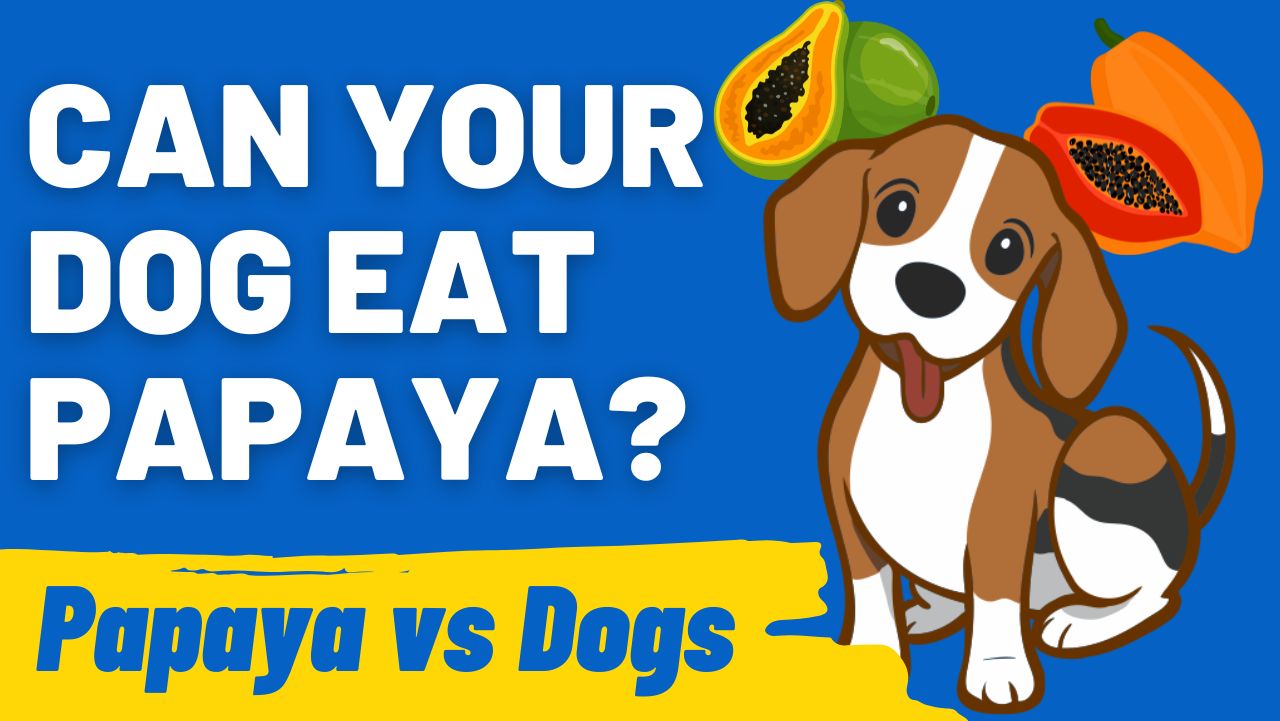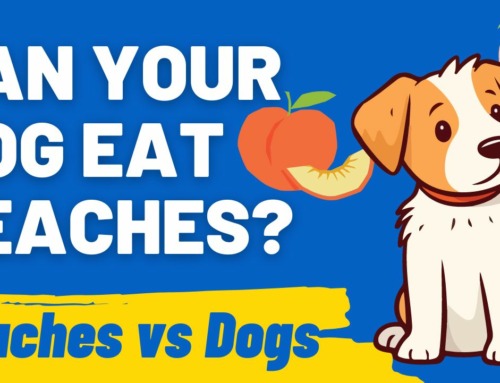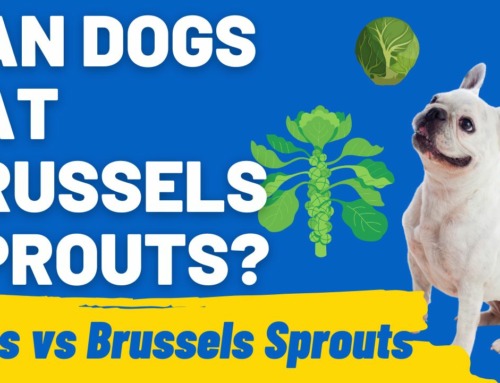Can dogs eat papaya? This question pops up frequently among pet owners keen on sharing tropical treats with their furry companions.
It’s crucial to understand which fruits are safe for dogs, and papaya is often a topic of interest. With its sweet taste and vibrant color, papaya is a tempting treat for humans, but what about our canine friends?
This guide dives into whether papaya is a safe choice for dogs, ensuring pet owners can make informed decisions about their dog’s diet.
Let’s explore the safety and benefits of feeding papaya to our four-legged pals.
Nutritional Benefits: What Can Papaya Offer to Your Dog?

Wondering about the benefits of papaya for dogs? You’re in the right spot! Papaya isn’t just a delicious tropical fruit; it’s packed with nutrients that can be great for your pup.
Let’s break down the vitamins in papaya for dogs and why they matter:
- Vitamin A: Essential for maintaining healthy vision, Vitamin A in papaya supports your dog’s eyesight, especially beneficial as they age.
- Vitamins C and E: These antioxidants help in boosting your dog’s immune system. They fight off free radicals, keeping your pup healthy and energetic.
- Fiber: A moderate amount of fiber in papaya aids in digestion, helping to keep your dog’s tummy happy and preventing constipation.
- Folate: Important for cellular metabolism and the production of red blood cells, folate in papaya is a key nutrient for your dog’s overall health.
- Potassium: This mineral is crucial for proper heart and muscle functions. Papaya is a good source, contributing to your dog’s cardiovascular health.
- Calcium and Magnesium: These minerals found in papaya support bone health and nerve function in dogs.
While the benefits of papaya for dogs are clear, it’s important to introduce any new food into your dog’s diet gradually.
Papaya should be given as a treat, not as a meal replacement. This way, you can ensure your dog enjoys the tasty and nutritious perks of this tropical fruit without any issues.
Spotting Papaya Allergies in Dogs
Identifying papaya allergies in dogs is crucial for their well-being. Can dogs eat papaya without issues? Mostly, yes, but some might react differently.
Here’s what to look for:
- Skin Reactions: If your dog starts itching or develops a rash after eating papaya, it could be an allergic reaction.
- Digestive Distress: Symptoms like diarrhea or vomiting are red flags. Papaya might not suit your dog’s stomach.
- Respiratory Symptoms: Sneezing, coughing, or difficulty breathing post-papaya munching? It could be a sign of an allergy.
- Behavior Changes: Unusual lethargy or discomfort following their papaya treat might indicate a problem.
In case of any such symptoms, it’s best to eliminate papaya from your dog’s diet and consult a vet. Remember, while papaya allergies in dogs are not common, it’s always better to be cautious and observe your dog closely when introducing any new food.
Papaya for Digestive Health in Dogs
Wondering about papaya digestive health for dogs? You’re in the right spot. The role of papaya in the digestive health of dogs is quite significant.
Papaya is not just a yummy treat. It’s packed with papaya enzymes and dogs can greatly benefit from them.
These enzymes, particularly papain, aid in breaking down proteins, making digestion smoother for your pooch. It’s like a natural digestive enzyme supplement!
Additionally, the fiber in papaya is a boon for your dog’s gut health. It helps regulate bowel movements, reducing the chances of constipation and keeping the digestive system running smoothly.
But remember, moderation is key. While papaya is great for your dog’s digestion, too much can lead to upset stomachs.
So, when it comes to feeding your furry friend papaya, think of it as a health-boosting snack rather than a meal. A small, balanced serving can support their digestive wellness in a tasty, enjoyable way.
Adding Papaya to Your Dog’s Regular Diet
Integrating papaya in dog diet can bring a refreshing and nutritious twist to your furry friend.
Whether you’re considering homemade dog food with papaya or whipping up some delightful papaya dog treat recipes, here’s how you can safely include this tropical fruit:
- Begin with Small Portions: Introduce papaya slowly into your dog’s diet. A few bites are enough to start.
- Seedless and Skinless: Always remove the seeds and skin from the papaya. The seeds can be harmful, and the skin is difficult for dogs to digest.
- Mix it Up: Chop papaya into small pieces and mix them into your dog’s regular meals. It adds a burst of flavor and nutrients.
- Homemade Treats: Create simple papaya dog treat recipes. Blend papaya with dog-safe ingredients like plain yogurt for a delicious snack.
- Cool Treats: Freeze papaya chunks for a refreshing, healthy treat, especially on hot days.
- Avoid Processed Papaya: Use fresh papaya only. Canned papaya often contains added sugars and preservatives not suitable for dogs.
To make snack time even more exciting and engaging for your pooch, you can use a treat dispensing toy like Hide’n’Treat. This toy can add an element of play and mental stimulation as your dog works to get their delicious papaya treat.
Foods to Avoid: A Brief Guide to Dog Dietary Hazards

Navigating the diet of our furry friends can be tricky, especially when it comes to fruits. While it’s great that dogs can eat papaya, it’s equally important to know which fruits are safe and which fall under the toxic foods for dogs category.
It’s well-known that certain common human foods are dangerous for dogs.
Grapes and raisins can cause severe kidney damage, while onions and garlic might lead to anemia. Chocolate, with its theobromine content, is a famous no-go, and caffeine or alcohol are also big hazards.
When it comes to fruits, alongside the safe option of papaya, other fruits are beneficial for dogs. Apples (sans seeds and core), bananas, blueberries, and seedless watermelons are all great choices.
However, not all fruits are dog-friendly. Avocado contains persin, harmful to dogs, and cherries have pits with cyanide.
Table: Safe vs. Unsafe Fruits for Dogs
| Safe Fruits | Unsafe Fruits |
| Papaya | Grapes |
| Apples (cored) | Raisins |
| Bananas | Avocado |
| Blueberries | Cherries (pits) |
| Watermelon (seedless) | Peaches (pits) |
| Strawberries | Plums (pits) |
| Cantaloupe | Persimmons |
| Pears (cored) | Tomatoes (plant) |
This list offers a snapshot of what to feed and avoid, but it’s not exhaustive. Always do your homework and talk to your vet when introducing new foods to your dog’s diet.
Ensuring we know the difference between safe fruits for dogs and toxic foods for dogs is key to their well-being. Remember, our treats aren’t always treats for our pups.
How to Feed Papaya to Your Dog Safely
Can dogs eat papaya without any risks? Yes, but it’s all about how you feed it to them. Understanding the right way of feeding your dog papaya ensures they get the benefits without any downsides.
Let’s get into the nitty-gritty of feeding your dog papaya safely, addressing key questions like “Can dogs have papaya seeds?” and “How much papaya can dogs eat?”
First and foremost, papaya seeds should be strictly avoided. These seeds contain small traces of cyanide and pose a choking hazard.
Equally important is the discussion around papaya skin and dogs. It’s essential to remove the papaya skin before offering it to your dog as it’s tough for them to digest.
When it comes to portion size, moderation is absolutely key. Excessive papaya can lead to stomach upset in dogs.
The table below offers guidelines tailored to different dog sizes, emphasizing peeled and seedless papaya as the safest preparation method.
Table: Guidelines for Feeding Papaya to Dogs
| Dog Size | Portion Size | Frequency | Preparation |
| Small | 1-2 Small Pieces | Once a week | Peeled, Seedless |
| Medium | 2-3 Small Pieces | 1-2 times/week | Peeled, Seedless, Cubed |
| Large | 3-4 Small Pieces | 2-3 times/week | Peeled, Seedless, Cubed |
This table serves as a quick guide for feeding your dog papaya.
Remember, every dog is different, and it’s always a good idea to start with a smaller amount to see how they react. Introduce papaya slowly into their diet and watch for any signs of allergies or digestive issues.
Conclusion: The Verdict on Papaya for Dogs
So, what’s the final say on the question: Can dogs eat papaya? Absolutely, but as with all things in dog nutrition and tropical fruits, moderation is key.
Papaya is a safe and nutritious treat for dogs, offering a variety of health benefits, from aiding digestion to providing essential vitamins. Just remember to remove the seeds and skin, start with small portions, and watch your dog’s reaction.
By following these guidelines, you can safely add a little tropical flair to your pup’s diet. Papaya, in the right amounts, can be a delightful and healthy addition to your dog’s meal plan.
Discover Joyful Playtime with HoundGames
Ready to take your furry friend’s snack time to the next level? Explore the world of engaging and enriching dog toys at HoundGames.
Our selection is not just about play. It’s about enhancing the bond between you and your beloved pet. From interactive treat dispensers to a variety of fun toys, we’ve got everything to make your dog’s day.
But that’s not all – our expert insights and resources are here to support you in fostering a happy, healthy relationship with your dog.
Visit us now at HoundGames, where playtime meets quality and care. Let’s make every moment with your dog unforgettable!




